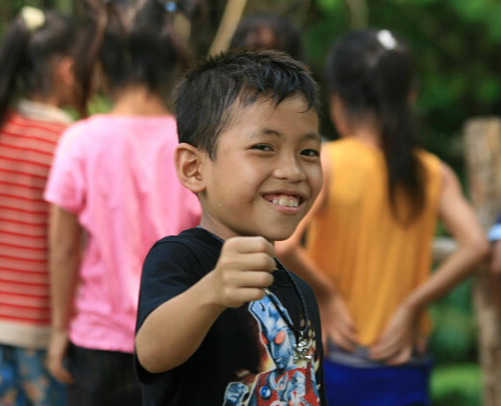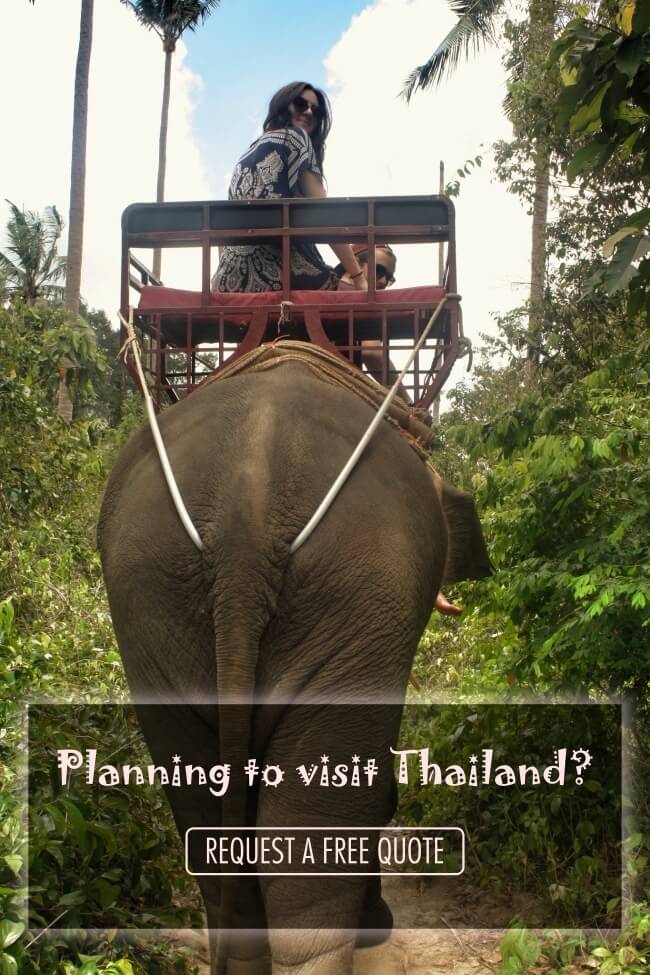Wondering what to do in Uthai Thani? These are the things you’ll want to do while you visit Uthai Thani. You can subdivide into Uthai Thani nature and Uthai Thani culture or any tag you like.
1.The Tak Bat Thewo Fair
The Tak Bat Thewo Fair at Wat Sangkat Rattanakhiri is the most important event and is held around October. Hundreds of monks residing within the Mueang district walk down the steps from the top of Khao Sakaekrang to accept food offerings from Buddhist devotees who gather in the ground of the temple. The fair is based on the traditional belief that the Lord Buddha on one occasion returned to earth from heaven.
2. Wat Tam Khaowong
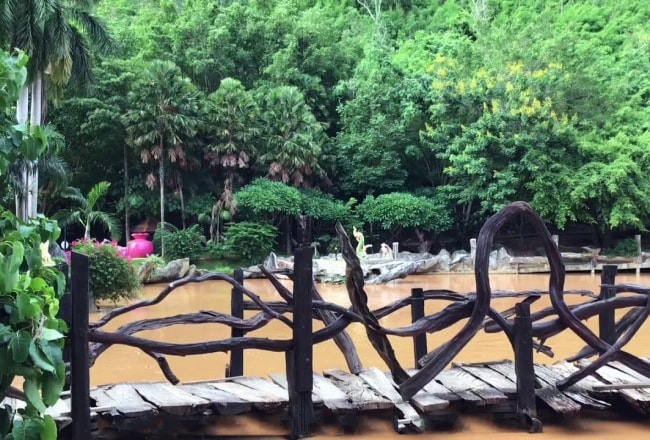
Wat Khao Wong is a temple situated in a valley. It has a beautiful two-storey Thai-style convocation hall in an exquisitely landscaped area, surrounded by mountains and forest. The monastery is the 13th of 19 branches of Wat Sangkhathan in Nonthaburi, found in Chiang Mai, Um Phang, the United Kingdom, and India. The monastery was built in 1987 and has a total area of over 3 square kilometers.The most striking feature of Khao Wong Monastery is its four-story Thai-style multi-purpose pavilion. Built almost entirely of wood, the pavilion has a pond in front with various fish. Around the pond is a garden of vibrant, colorful flowers. The wood used in the pavilion's construction was donated by locals and has been transformed into a work of architecture that retains natural qualities. The monastery has a monthly meditation class for those who are interested.
3. Wat Chantaram
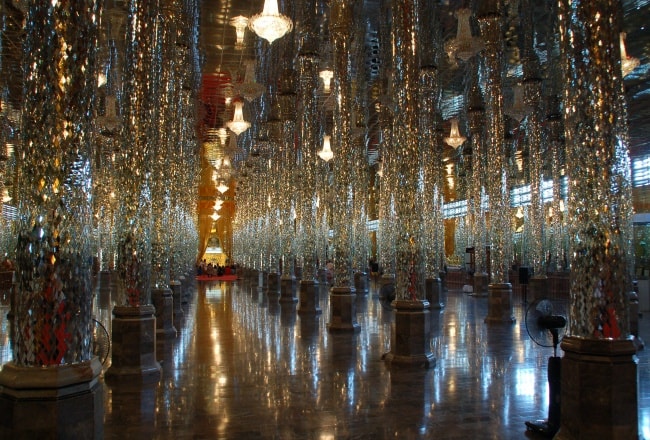
WatChantaram, commonly known as Wat Ta Soong, was established in Ayuddha. The temple possesses a small-size monastery in which paintings depicting Buddha's history were completed by local artists and some of which are understood to be painted later as they are unbalanced in some ways. Another precious of the temple is the pulpit LuangPohYai built. In the monastery, a stucco Buddha's image and 2-3 Thai wood carvings on tympanum are installed. On the opposite of the temple is a new large sacred place.
4. Wat Thammakosok
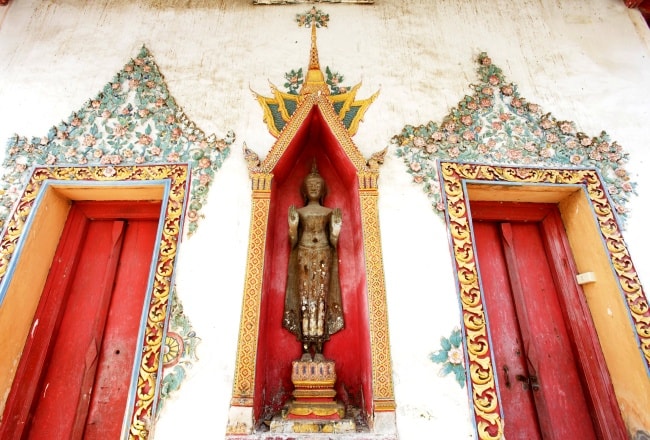
Wat Thammakhosok or called "Wat Rong Kho" as it is called by locals, was built in the early Rattanakosin period. It was used to hold rites by Uthai Thani government officials to pledge their allegiance to the king, but has a dark history as the site of executions as well.The most interesting places in the temple are the chapel and the main Buddha image hall. The chapel is of the Rattanakosin period, covered by a tiled roof. Beautiful murals inside line the walls, the works of late Ayutthaya artists. A pedestal inside the main hall has around 20 Buddha images on it, but the main Buddha image is considered the most sacred of all. Outer windowpanes are adorned with plaster drawings of the epic Ramayana as frames. The doors have wooden floral patterns painted in bright red.Wat Thammakhosok is on Si Uthai Road, Tambon Uthai Mai in Amphoe Mueang. It is open from 6.00 am-5.00 pm daily.
5. Wat Sangkat Rattana Khiri
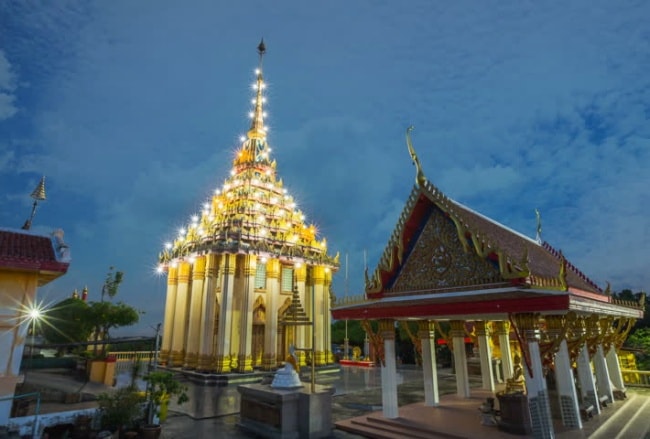
Wat Sangkat Rattana Khiri lies at the foot of Khao Sakae Krang at the end of Tha Chang Road in Tambon Nam Sum. Inside the main hall is Phra Bhuddha Mongkhon Sai Sit, also called Luang Pho Mongkhon, an ancient bronze Buddha image from the Sukhothai period in the Man Wichai posture. It is 1.5 meters wide and was made in the reign of King Lithai.A stairway leads to the top of Khao Sakae Krang totaling 449 steps. At the peak is a pavilion with a multi-tiered roof, housing a replica of Lord Buddha's footprint and a large bronze bell built in the reign of King Rama V. It is said that this is a sacred bell, and visitors to the province who have not rung the bell have not truly seen the province. In another corner of the temple is the statue of the father of King Rama I, the founder of the Chakri Dynasty, who was born in Ban Sakae Krang.
6. Wat Uposatharam
Wat Uposatharam, previously known as Wat Bot Manorom or Wat Bot, is an old temple located on the bank of Sakae Krang River, on Ko Thepho, in the Mueang Municipality area. From the municipal fresh food market, there is a bridge crossing to the temple which is on the east side of the Sakae Krang River. Interesting sights of Wat Uposatharam are the murals in the ordination hall and temple hall, elaborately crafted in the early Rattanakosin Era. They depict the legend and biography of Lord Buddha from his birth until his death. Paintings in the temple hall depict the story of Lord Buddha's lectures to deities and his decision to reach nirvana.
7. Wat Tamkhao Tapab
It is located on a small mountain in the area of Tambon Wang Hin, 56 kilometers off the city. You can travel by personal car along High way number 333 (Uthaithani- Banrai line). Once arriving intersection on the right hand, you can use Highway number 3213, drive into about 1 kilometer then you will see WatTamkhaoTapab on your right hand and TamkhaoTapab (literally KhaoTapab Cave) is about 10 meters above ground. Additionally, if you want to visit WatTamkhaoTapab, you can travel to other places to admire natural scenery of countryside. The front of the cave is allocated into the area for Buddha's images and for monks' area. At the back of the cave they will see Tong Prarong, Kaew, Prasart and Rue Cave. If you turn left, you will see the exit at the back which is a deep cave way and ladders for further. Moreover, the tunnel in the back cave is composed of rockswhich are the same as soft-shelled turtle.Rocksused as tool in prehistoric periodwere also discovered and each of the caves is full of bats living inside. However, you can travel easily and safely as there are enough flashlights along the wayfor your convenience. You can travel, admire the beauty in the forest temple and such rare animals as bats.
8. Thung Yai Naresuan Huai Kha Khaeng Wildlife Sanctuary

The land with abunbant natural resources which is a gift for Thai citizens and the rest of the world. It is also an important area for humans and wildlife. Listed as world heritage by UNESCO.
Thung Yai Naresuan-Huai Kha Khaeng Wildlife Sanctuary has only grown in fame since it was registered as a World Heritage Site by UNESCO in December 1991. Huai Kha Khaeng covers 5,775 square kilometers, engulfing six Amphoes in three provinces. It also comprises of Thung Yai Naresuan Wildlife Sanctuary, making it the largest connected conserved forest in Thailand and the South East Asia Region. Huai Kha Khaeng was pronounced a World Heritage Site due to its five types of tropical forests extant within its borders, blessed with biodiversity. Some of the fauna are nearly extinct, including wild water buffalo, serow, leopard, Asiatic wild dog, red junglefowl cock, green peafowl and many species of forest insects. Normally, the wildlife sanctuary does not open for tourists because it is a conserved, high-sensitive area. Travelers are permitted to visit only three points of interest: headquarters of Huai Kha Khaeng Wildlife Sanctuary (where the Sueb Nakhasathian Memorial celebrates an important figure in the sanctuary's history); Saiboe Ranger Station (where Saiboe Waterfall is located); and Huai Mae Di Ranger Station (where there are campgrounds and a nature study route.)
9. Ban Khok Mo’s Local Weaving Centre
Khok Mo residents are Lao Khrang minority who emigrated from Vientiane since the early Rattanakosin Period. They are very skillful in weaving cloth which has been a cultural heritage of Lao Khrang people from generation to generation for more than 200 years. After the harvest ends, all women in the village will begin to weave cloth to make Pha Mudmi with a Thin Chok, Pha Yok Dok - cloth in a raised pattern - with old Lai Choeng - foot pattern. The patterns of the cloth are of an ancient style such as Lai Dan Mueang Lao, Lai Nak, and Lai Dan Yai. In addition, in the past, they used Khrang - lac - in a dyeing process. There are 2 weaving centres: Ban Khok Mo Weaving Centre, a group of people weaving silk cloth near Wat Khok Mo, and Ban Khok Mo Product Distribution and Weaving Demonstration Centre, situated at Mu 2, behind the office of Khok Mo Subdistrict Administration Organization. The latter group weaves cotton cloth with dyes from nature
10. Cyber Waterfall
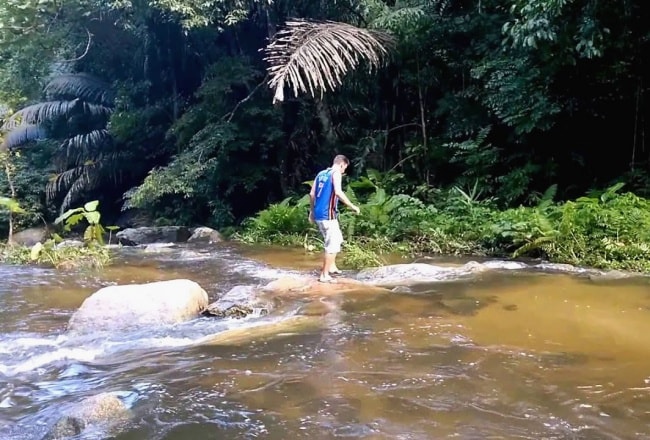
This waterfall is in Huai Kha Khaeng Wildlife Sanctuary, one of the area's prettier tourist attractions. Namtok Hin Lat is situated amidst the flora of the Huai Kha Khaeng forest. This multi-layered waterfall is formed by water from Huai Loi Choi, which flows from a high mountain in Huai Kha Khaeng Wildlife Sanctuary. The waterfall at the higher level is called Namtok Loi Choi. In some parts, the water tumbles over a large rock, so it is called Namtok Hin Lat (or "flat rock").
11. Phu Wai Cave
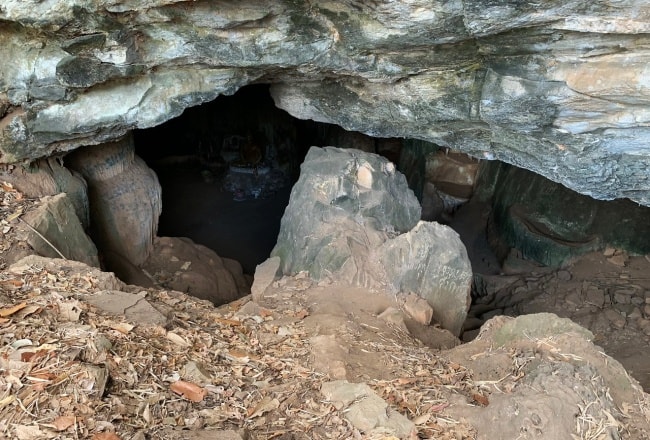
It is located among high and complex limestone mountain in the area of Phu Toei National Park. The cave is large and spacious with stalagmites and stalactites in different forms, such as chedi and batshtub. There are also signs indicating positions and names of the rock forms. The entrance to the cave is on a mountain slope which is approachable on foot. The cave is airy as there is a cavity opening to the other side of the mountain inside.There are up to nine types of batss living in Phu Wai Cave, which are fruit bats, Thomas's Horseshoe bats, Andersen's Leaf-nosed bats, Black-bearded Tomb bats, Great Himalayan Leaf-nosed bats, Large Bent-winged bats, Dobson's Horseshoe bats, Horsfield's Leaf-nosed bats, Orchid tip-winged bats. This is one of the caves with most variable bat types in Thailand.
12. Luang Pho To Wat Phatung
It is situated in Wat Phatung at 181, Moo 2, Huay Kaeng Sub-District, Baan Rai District, Uthai Thani Province. Travelling by car, turn left when you see Baan Pa Thung Ancient Style Woven Cloth Center and continue driving for about 1 kilometer. The uniqueness of this temple is the stairs with the statue of a dragon swallowing the King of Naga at the front side of the temple. It is one of animals of Himmapan Forest in Lanna's legend which can be seen in many temples in the northern region. The big Luang Pho To statue is in the temple. It is 23 meters wide and 52 meters tall. It was built in 1989 by people who respect Somdet Phra Buddha Chan (To Phrommarangsee). There is a 3-4 meter cannonball tree behind the statue which is the significant tree in the legend of Buddha. This statue is one of sacred Buddha statues in Uthai Thani.After visiting Luang Pho To, do not forget to visit Guan Yim statue nearby.
13. Trok Rong Ya Walking Street
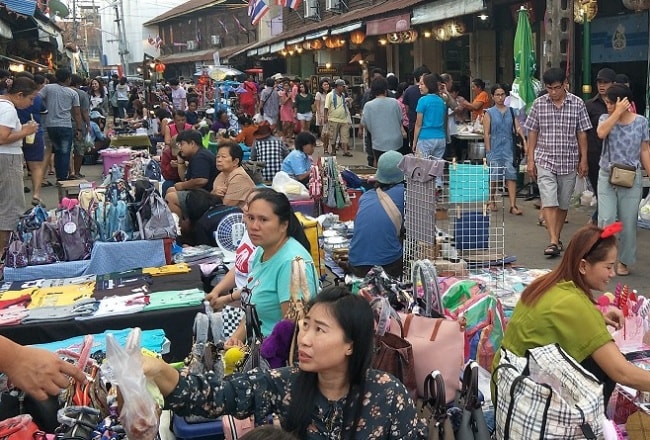
Trok Rong Ya Walking Street is the result from the integration of private sector and public sector And Naresuan University. The important goal is to awaken the community by creating the beginning of a living classroom. Learning together To link history between old people and new generations. The power of cooperation in the community, also a place to meet, exchange of public opinion And promote the tourism of the community which contribute to the proud of the way of life of the Uthai Thani. Moreover, to leads sustainable urban development. Open in every saturday from 15.00-21.00
14. Sakae Krang River
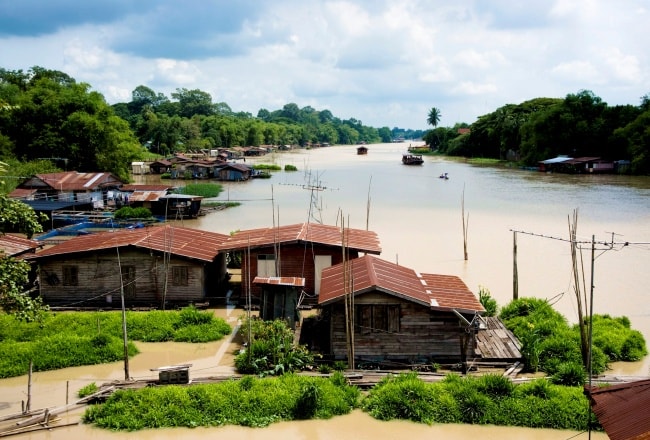
The house rafts on Sakae Krang River reflect the old link between water and the Uthai Thani people's way of life. Water here is used to grow the sweetly fragrant pandanus and to raise fish in floating baskets, particularly gourami. The province is famed for this old way of farming fish, now a major occupation.Tourists can take a boat tour to observe the lives of people living on rafts on Sakae Krang River by boarding at Lan Sakae Pier near Municipal 2 Fresh Market in Amphoe Mueang. Visitors may also board at Lan Suphannika in front of the provincial hall on Sri Uthai Raoad. The route passes Wat Tha Sung and ends at Tambon Tha Sung where Sakae Krang River and Chao Phraya River meet.











